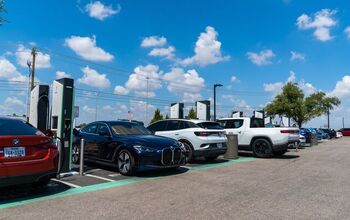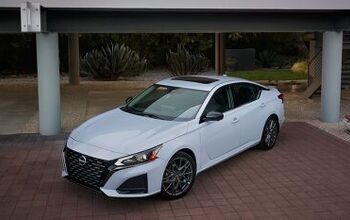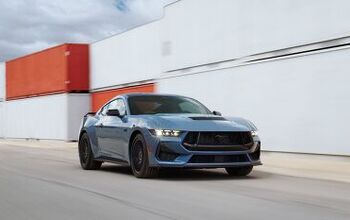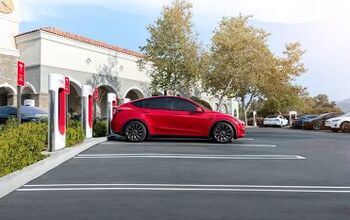Millennials Are Human After All: Moving to the Suburbs, Buying Large SUVs

It turns out millennials aren’t the freakish alien shape-shifters the media has portrayed them as for the last decade. While still less prone to breeding, poorer than their parents, more educated, and inclined towards city living, they’re human after all.
“Where’s the proof?” you ask?
Recent surveys indicate millennials are, in fact, moving to the suburbs and buying SUVs. But that didn’t stop analysts from being dicks about it. “As more people move out of their parents’ basement — and there’s still quite a few living there — we expect to see continued healthy demand for homes,” explained Svenja Gudell, chief economist for Zillow. “Millennials delayed home ownership, just like they delayed getting married and having kids, but now they’re making very similar decisions to their parents.”
More importantly, home ownership means compulsory sport utility shopping. Large SUV sales have increased 11 percent in the first half of 2017, according to estimates from Ford Motor Company. Meanwhile, midsize family haulers increased by 9 percent and small SUV sales went up by 4 percent. Ford’s market research indicates this could just be the tip of the iceberg.
“There’s no question people are waiting longer, but people still want to have children,” Erich Merkle, Ford’s U.S. sales analyst, told Bloomberg in an interview. “As long as people have children and those children grow and acquire friendships, it requires more space.”
Assuming millennials do things by the book (instead of engaging in whatever flaky generational stereotypes news outlets like to pretend they prefer), more of them are expected to move into larger SUVs to facilitate family life. Sales of midsize SUVs will grow by 16 percent between now and 2022, while deliveries of vehicles like the Chevrolet Suburban or Mercedes-Benz GLS-Class will jump by 25 percent, according to a forecast by researcher LMC Automotive.
Today, the largest group of midsize and large SUV buyers are between the ages of 35 and 44, Merkle said. However, as Generation X is significantly smaller than the millennial population, the younger population has more buying potential. In fact, if you don’t subscribe to the generational trends nonsense, simply knowing there are more people coming down the pipe ready to start a family is reason enough to expect SUV sales will remain on the rise.
“There’s going to be an extra 25 million people passing into and through the 35-to-44 year old demographic over the next 10 to 15 years,” Merkle said. “That’s going to lead to a gradual increase in the growth of large and midsize SUVs that’s already starting to happen.”
Sales of the Ford Expedition, Chevrolet Tahoe, Chevrolet Suburban, GMC Yukon, and Nissan Armada were all up significantly in 2016. It was the same for most big SUVs sold in America and 2017 is on pace to be even better. In fact, Nissan’s Armada has already sold more units in the first half of this year than it did in all of 2016.
That growth will be further driven by millennials, the oldest of whom have lifted the annual birthrate for women 30 to 34 years of age to the highest level since 1964, according to the U.S. Centers for Disease Control and Prevention. The bottom line is families of all ages typically want SUVs, especially now that minivans are passé. They’re larger, provide easier access to cargo, promote a sense of safety, and are a good way to show up the neighbors who understood owning a Honda Accord was probably all they needed.
“As a sample size of one, I certainly need a lot of space because it’s really tough to travel with a child,” said Zillow’s Gudell, who drives an Audi Q5.
[Image: General Motors]

A staunch consumer advocate tracking industry trends and regulation. Before joining TTAC, Matt spent a decade working for marketing and research firms based in NYC. Clients included several of the world’s largest automakers, global tire brands, and aftermarket part suppliers. Dissatisfied with the corporate world and resentful of having to wear suits everyday, he pivoted to writing about cars. Since then, that man has become an ardent supporter of the right-to-repair movement, been interviewed on the auto industry by national radio broadcasts, driven more rental cars than anyone ever should, participated in amateur rallying events, and received the requisite minimum training as sanctioned by the SCCA. Handy with a wrench, Matt grew up surrounded by Detroit auto workers and managed to get a pizza delivery job before he was legally eligible. He later found himself driving box trucks through Manhattan, guaranteeing future sympathy for actual truckers. He continues to conduct research pertaining to the automotive sector as an independent contractor and has since moved back to his native Michigan, closer to where the cars are born. A contrarian, Matt claims to prefer understeer — stating that front and all-wheel drive vehicles cater best to his driving style.
More by Matt Posky
Latest Car Reviews
Read moreLatest Product Reviews
Read moreRecent Comments
- Bd2 If I were going to spend $ on a ticking time bomb, it wouldn't be for an LR4 (the least interesting of Land Rovers).
- Spectator Wild to me the US sent like $100B overseas for other peoples wars while we clammer over .1% of that money being used to promote EVs in our country.
- Spectator got a pic of that 27 inch screen? That sounds massive!
- MaintenanceCosts "And with ANY car, always budget for maintenance."The question is whether you have to budget a thousand bucks (or euro) a year, or a quarter of your income.
- FreedMike The NASCAR race was a dandy. That finish…


































Comments
Join the conversation
Sure Svenja, that tiny VAG product gives you so much space for that whole ONE child. Pathetic.
Duh